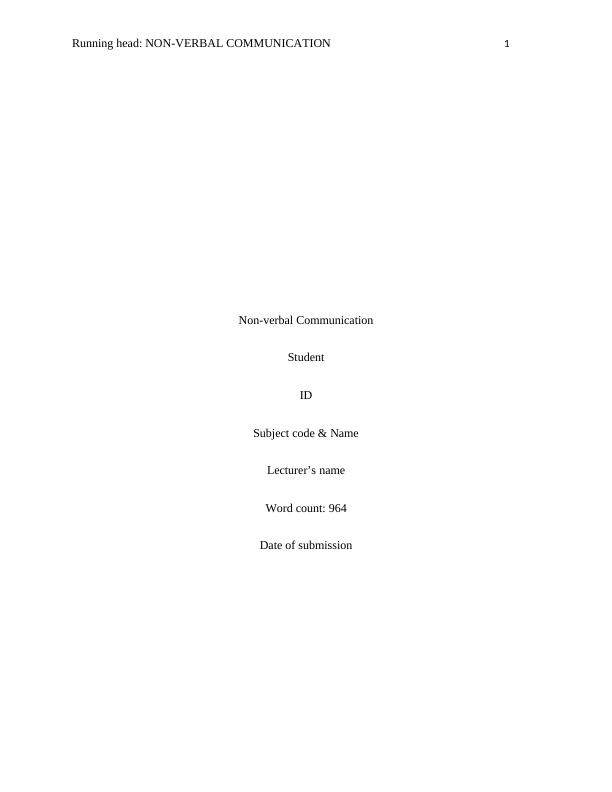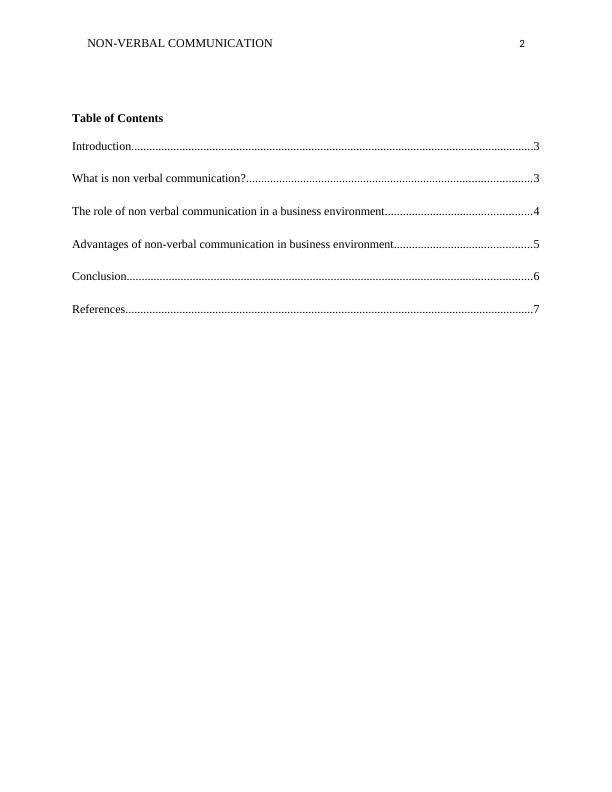Non-verbal Communication
8 Pages1529 Words22 Views
Added on 2023-02-01
About This Document
This article discusses the importance and advantages of non-verbal communication in a business environment. It explores the role of body language, facial expressions, and gestures in conveying messages effectively. Non-verbal communication includes visual cues like body language, physical appearance, and distance. Understanding non-verbal cues can help in interpreting the true meaning behind verbal messages and building trust in a business setting.
Non-verbal Communication
Added on 2023-02-01
ShareRelated Documents
End of preview
Want to access all the pages? Upload your documents or become a member.
Nonverbal Communication in Professional Settings
|8
|2042
|80
Communication Models and Methods in Business
|19
|1407
|21
Importance of Communication in Personal and Professional Life
|8
|2007
|307
Non-Verbal Communication: Types, Importance and Practices
|7
|1463
|473
EFFECTIVE BUSINESS COMMUNICATION
|24
|5714
|122
Management. 1. Management and counselling. Management a
|3
|334
|2



